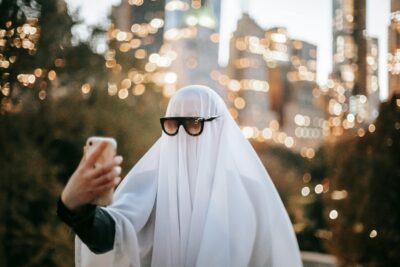With COVID rates surging, many of us are opting to ditch our travel plans and spend the holiday alone. But that doesn’t mean the holidays have to be lonely. Science reveals that there are ways to feel more connected, even when no one’s around.
Here’s how:
1. Engage in a Hobby:
Research finds that a distinguishing characteristic of people who are alone but not lonely is that they feel in control. It’s not that they are without friends; it’s that they choose to be alone. Other research finds that people who spend time alone of their own volition experience less loneliness and higher well-being. These studies suggest that when we can relate to our time alone as an offering then it’s less likely to sting like loneliness. We can do so by engaging in a hobby. Cooking, crafts, house projects: these are all activities that will transform our alone time into something meaningful and fulfilling.
2. Watching t.v. and scrolling social media will make you more lonely:
In Bowling Alone, Robert D. Putnam examines factors that explain why our social engagement has been shrinking over the last few decades. Is it our longer commute times? Residential mobility? According to his research, none of these explained decreased social engagement as much as the creation of the t.v. “If TV steals time, it also seems to encourage lethargy and passivity,” Putnam argues, a phenomenon my friends and I call “the plop effect”–plop on your couch and you won’t get off, no matter how lousy it feels. His book came out before social media, but it’s likely that scrolling on social media has similar effects. Studies linking a sedentary lifestyle to increased loneliness. While technology is the lowest hanging fruit in distracting us from our loneliness, it only makes us lonelier in the long run.
3. Look for the beauty in everyday things:
In one intervention, people were told to go on an “awe walk” for fifteen minutes a day. They spent it noticing everyday beauty, like the vibrant colors of the fall leaves, or the breeze against their face. The awe walkers felt more socially connected than a control group of walkers. Other research links gratitude and loneliness, suggesting that if we look for things to be thankful for, or relish the beauties of life, we’ll feel more connected.
4. Take a warm shower:
A study found that when people recalled an experience of rejection while holding a hot pack, they reported less negative feelings and loneliness afterward. This study illustrates embodied cognition–the idea that our bodies influence our minds, or in the researchers’ words, “feelings of social warmth or coldness can be induced by experiences of physical warmth or coldness.” We can feel the warm glow of social connection by making hot chocolate, cranking up the heat, or taking a warm shower.
5. Practice loving-kindness meditation:
Loving-kindness meditation involves us meditating on the love we have for others and has been found to increase feelings of social connection. This is true even when it is only done for a few minutes (my favorite loving-kindness video is here). Our internal feeligns of connectedness, not just whether we’re around someone, affect our lonely feelings.
For more on friendship, order my book: Platonic: How the Science of Attachment Can Help You Make- and Keep -Friends.
Note: This article is cross-posted on my Psychology Today blog.




